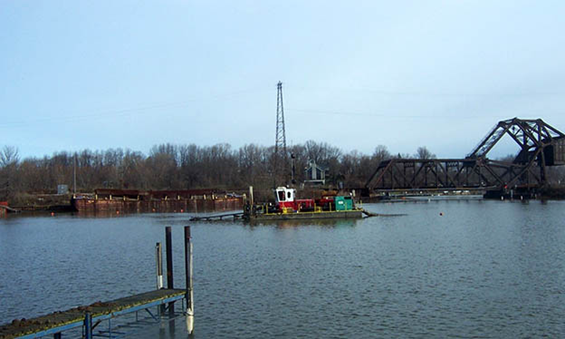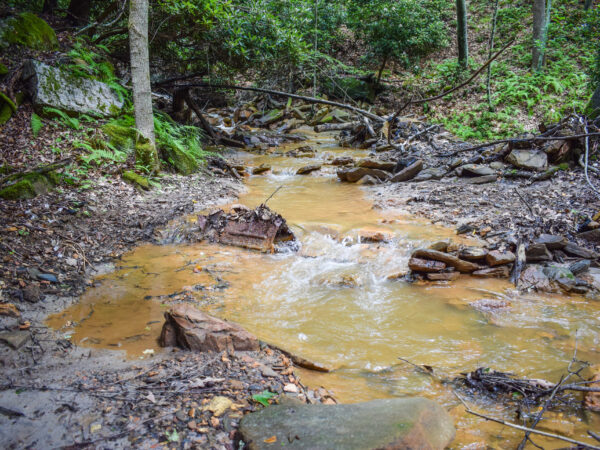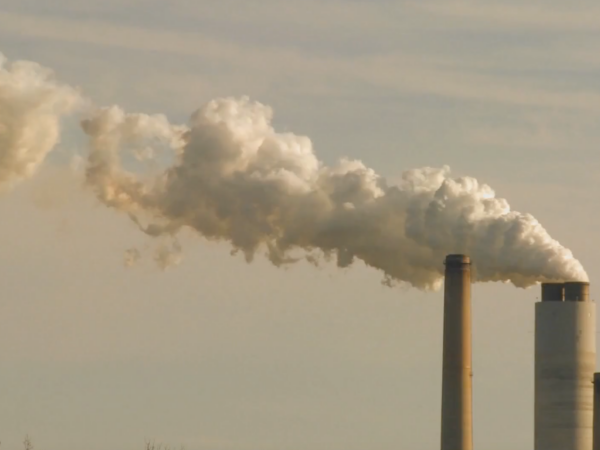
Great Lakes Moment is a monthly column written by Great Lakes Now Contributor John Hartig. Publishing the author’s views and assertions does not represent endorsement by Great Lakes Now or Detroit Public Television.
When the Ashtabula River and Harbor were identified as a Great Lakes pollution hotspot, or Area of Concern, in 1985, few people thought the day would ever come when it was cleaned up and no longer a detriment to the community and Lake Erie.
Over the past more than 100 years, many rivers and harbors along the Great Lakes became conduits of industry, linking onshore factories to the Great Lakes and its St. Lawrence Seaway. This industrial expansion spurred economic growth but also left a legacy of environmental contamination caused by unregulated pollution. One of the hardest hit waterways was the Ashtabula River, a Lake Erie tributary in the northeast corner of Ohio.
Beginning in the early 1800s, the lower Ashtabula River was widened and deepened to accommodate commercial shipping and shipbuilding. This attracted industries, including many chemical companies.
From the 1940s through the late 1970s, discharges of contaminants settled in the mud along the river’s last 2 miles. Over time, the area became contaminated with a toxic stew of chemicals, including polychlorinated biphenyls (PCBs), mercury, chromium, lead, zinc, polycyclic aromatic hydrocarbons (PAHs), chlorinated benzene compounds, chlorinated ethenes, hexachlorobutadiene, uranium, radium and thorium. Compounding the problem, Fields Brook, which flows into the Ashtabula River, eventually became the home of 19 separate industrial facilities. Contamination of Fields Brook became so significant that it was designated a federal Superfund site in 1983 with many uncontrolled hazardous waste sites.
Recognizing this significant toxic contamination, the International Joint Commission’s Great Lakes Water Quality Board identified the Ashtabula River and Harbor as a Great Lakes Area of Concern in 1985. The Ohio Environmental Protection Agency, in partnership with U.S. EPA, accepted responsibility for developing and implementing a remedial action plan to clean up the river and harbor, and restore impaired beneficial uses. For example, fish were unsafe to eat, and restrictions were in place on disposal of dredged sediments because of the buildup of toxic substances in the river bottom.
The cleanup plan was completed in 1991.
In 1994, the Ashtabula River Partnership was formed to facilitate a voluntary cleanup of the Ashtabula River. This partnership would grow to 50 organizations, including federal and state environmental agencies, businesses and citizens – all managed by the local port authority. This public-private partnership was a major success and eventually invested nearly $70 million in contaminated sediment remediation and habitat rehabilitation projects.
Between 2006 and 2013, the U.S. EPA, U.S. Army Corps of Engineers, Ohio EPA, city of Ashtabula and many industrial partners collaborated to remove more than 620,000 cubic yards of contaminated sediment containing 14,000 pounds of PCBs, plus low-level radioactive materials, heavy metals and other pollutants. Sediments were pumped into large fabric tubes, called geotubes, to drain water from the sediments, and then were placed into a specially designed containment cell called a confined disposal facility.
Over 2,500 linear feet of fish habitat was also rehabilitated. Considerable cleanup of the Fields Brook Superfund site has also occurred by responsible parties, likely in the range of tens of millions of dollars.
However, the current cleanup does not fully address injuries to natural resources. Therefore, a Natural Resource Damage Assessment is being undertaken by a group of natural resource management agencies to assess injuries to natural resources that have occurred as a result of the release of toxic and hazardous substances and determine whether compensation is due to the public. If compensation is warranted, the money will be used to restore, rehabilitate, replace or acquire the equivalent of the injured natural resources and the services they provide.
Today, the water flows cleaner, the river bottom is healthier for fish and invertebrates, and restored shoreline habitat is attracting more fish and wildlife.
The dredging that occurred has provided a deeper navigational channel, allowing the return to normal commercial navigation and recreational boating on the river and in the harbor. Finally, the Ashtabula River can once again live up to its name given by the Iroquois – “Hash-tah-buh-lah” – meaning river of many fish.
The cleanup of the Ashtabula River Area of Concern and removal from the international Great Lakes pollution hotspot list in 2021 are considered major successes that give hope to other communities working to clean up their polluted waterways. Few people thought this was possible in the mid-1980s. But if we look closely, there are a number of lessons learned from the Ashtabula River cleanup that could be beneficial to those interested in restoring other degraded waters.
- Governments and industry have not always worked together well to achieve environmental protection and cleanup.
The Ashtabula River Partnership created the framework and conditions for private sector involvement in the cleanup, and established trust and ensured cooperative learning necessary for achieving a common goal.
What made the Partnership so successful was the tremendous cooperation between responsible companies and government. It is an excellent example of a public-private partnership, where all came together through hard work, determination and collaborative financing to achieve the removal of only the 8th Great Lakes Area of Concern from the international list of pollution hotspots in 36 years. Funding support from the federal Great Lakes Legacy Act and Great Lakes Restoration Initiative was essential, as well as from non-federal funding partners.
- It was important to ensure agreement on and acceptance of long-term restoration goals early in the project.
As the old adage says, if you cannot agree to the problems, you will never solve them. Members of the Ashtabula River Partnership had to keep their eyes on the ball of long-term restoration goals, including quantitative targets, during all three phases of cleanup and make mid-course adjustments to achieve their common long-term restoration goals.
- It is important that all the different federal and state agency authorities and their respective policies be aligned for remediation of contaminated sediment.
If they are not aligned early in the process, this will lead to problems in the latter stages of cleanup. This can become an obstacle to cleanup and result in delays in cleanup.
- Partners need to focus on long-term sediment management solutions.
In the case of Ashtabula River sediments, a priority had to be placed on long-term solutions to dredging of sediments for navigational purposes, including any possible future beneficial use of sediments dredged from Ashtabula River and its harbor for habitat rehabilitation.
- In any major environmental initiative, it is important to build a record of success, celebrate it frequently, and share credit.
Building a record of success can help sustain momentum toward long-term goals.
Remember, it took 36 years to clean up the Ashtabula River. In celebrating successes, it is important to lift up the important contributions of others to give credit. Such expansion of credit enhances team cohesion and trust, promoting more and better collaboration.
John Hartig is a board member at the Detroit Riverfront Conservancy. He serves as a Visiting Scholar at the University of Windsor’s Great Lakes Institute for Environmental Research and has written numerous books and publications on the environment and the Great Lakes. Hartig also helped create the Detroit River International Wildlife Refuge, where he worked for 14 years as the refuge manager.
Catch more news on Great Lakes Now:
Great Lakes Moment: International wetlands treaty turns 50
Great Lakes Moment: Sugar Island is getting an ecological makeover
Great Lakes Moment: Ecosystem restoration needs more environmental justice
Featured image: Contaminated sediment remediation in the Ashtabula River (Photo courtesy of U.S. EPA)




